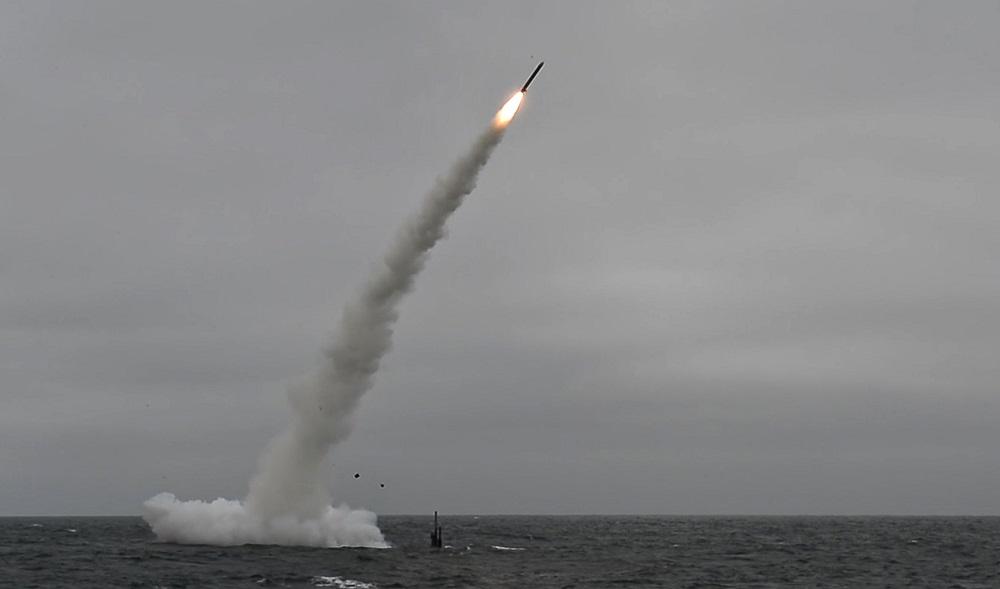Why Australia’s nuclear submarines should have vertical missile launchers
Posted By James Garlick on January 31, 2023 @ 06:00

China’s growing power and assertiveness have been significant drivers behind developments in Australian defence policy in the past few years. The previous government’s strategic update determined that the defence force needs the capability to ‘shape’ Australia’s strategic environment, ‘deter’ threats to Australian interests and ‘respond’ with credible military force. Since then, a bipartisan commitment to the acquisition of nuclear-powered submarines has emerged and the government under Prime Minister Anthony Albanese has initiated its own defence strategic review. That review and the report of the nuclear submarine taskforce are due in the first quarter of this year.
One problem confronting the independent leads of the strategic review and that the nuclear submarine taskforce should consider is that the Australian Defence Force lacks the lethality to shape the strategic environment or deter a major power.
The Hobart-class destroyers and yet-to-be-delivered Hunter-class frigates are of particular concern. These ships will be the navy’s main surface combatants for the next 30 years, but they have very few vertical launch cells compared [1] with their American and Chinese counterparts. The problem is that a future conflict is expected to be a ‘missile-to-missile game’ [2]. Some analysts doubt the efficacy [3] of surface combatants altogether.
In a previous post [4], I argued that the best way to deter aggression, and win a war if necessary, is to work with our allies to maximise the forces that can neutralise an aggressor’s ability to wage war. I suggested equipping the Collins-class submarines with Tomahawk missiles to enhance the ADF’s offensive power quickly and cost-effectively.
Missile-armed submarines are the best means of deterring an aggressor because of their offensive range and inherent stealth. Nuclear submarines add mobility and endurance to the mix. For this reason, Australia’s new submarines should be—in essence—guided-missile submarines, or SSGNs. SSGNs would shape Australia’s strategic environment and deter threats to Australian interests more effectively than a fleet of traditional nuclear-powered attack submarines (SSNs) because they would act as a powerful ‘fleet in being’.
The concept of a fleet in being originated [5] in the naval wars of the 18th century. The original notion was that one could prevent invasion even if one’s fleet was smaller than the enemy’s by avoiding its destruction in an engagement and thus maintaining the threat that it posed to expeditionary forces. In modern naval strategy, the concept refers to the extreme insecurity created by a powerful and mobile force when its whereabouts are unknown. Because the force could attack at any point or time, without warning, an adversary is unable to concentrate its defences. This is a significant deterrent to initiating conflict and, in the advent of war, forces the adversary to expend limited resources to defend valuable assets and thereby restricts the scope of its offensive operations.
The campaign against German territories in the Pacific during World War I provides an example. German Admiral Maximilian von Spee delayed and curtailed Australia’s efforts to capture German-controlled islands such as Rabaul, Angaur, Nauru and Yap. Spee’s mere presence in the Western Pacific mandated that Australia’s military expeditions be escorted with sufficient forces to counter his squadron, and the only British Empire warship in the Pacific that was up to the task was the battlecruiser HMAS Australia. The Australia couldn’t be everywhere at once, so convoys had to proceed one at a time rather than simultaneously. Some even had to be abandoned.
In today’s context, a potent fleet of submarines means that an adversary will have to guard its assets and expeditions with substantial anti-submarine forces. These forces are limited, so the scope of the adversary’s offensive operations will be supressed. This will allow Australia and its allies to concentrate their other forces for maximum effect.
The strategic influence that a fleet in being exerts is directly proportional to its power or lethality. In other words, the more lethal its weapons systems, the more it will influence its adversary’s calculations. A fleet of SSGNs would constitute the ultimate fleet in being, possessing mobility, endurance, stealth and maximum conventional lethality. Despite being classified as an SSN, the American Block V Virginia class will essentially be a missile submarine. The design has been augmented to carry 65 weapons [6] and fire them in a rapid volley from vertical launch cells. The British Astute-class SSN carries 38 weapons and can only launch them in volleys of six from its torpedo tubes.
The Americans plan to arm the new Virginias with Block V Tomahawks. These weapons have a range of around 1,600 kilometres and, in addition to the land-strike role for which Tomahawks are known, have a new anti-ship [7] capability. Hypersonic missiles will reportedly be deployed aboard Block V Virginias from 2028 [8], enhancing their lethality even further. A single Virginia-class sub will be able to shower land targets or a hostile taskforce from great range with dozens of missiles. A ‘wolf pack’ of Block V Virginias will likely present an insurmountable threat to a surface taskforce.
Short of acquiring nuclear weapons, building a fleet of SSGNs is the most effective way of shaping Australia’s strategic environment and deterring a major power. A fleet of SSGNs would make it exceedingly difficult to bring military pressure to bear against Australia. To do so, an adversary would have to accept exceptional risks to its own forces and infrastructure.
Article printed from The Strategist: https://aspistrategist.ru
URL to article: /why-australias-nuclear-submarines-should-have-vertical-missile-launchers/
URLs in this post:
[1] compared: /staying-alive-in-the-ran-surface-fleet-failure-is-not-an-option/
[2] ‘missile-to-missile game’: /hunter-class-frigates-wont-meet-the-rans-needs/
[3] efficacy: /that-sinking-feeling-the-future-of-surface-combatants/
[4] post: /could-a-submarine-tender-enhance-the-adfs-offensive-power/
[5] originated: https://digital-commons.usnwc.edu/cgi/viewcontent.cgi?referer=&httpsredir=1&article=1246&context=nwc-review
[6] 65 weapons: /astute-versus-virginia-which-nuclear-powered-sub-is-the-best-fit-for-australia/
[7] anti-ship: https://www.raytheonmissilesanddefense.com/what-we-do/naval-warfare/advanced-strike-weapons/tomahawk-cruise-missile
[8] 2028: https://www.defensenews.com/naval/2022/11/02/us-navy-touts-hypersonic-missile-progress-ahead-of-2025-fielding/
Click here to print.